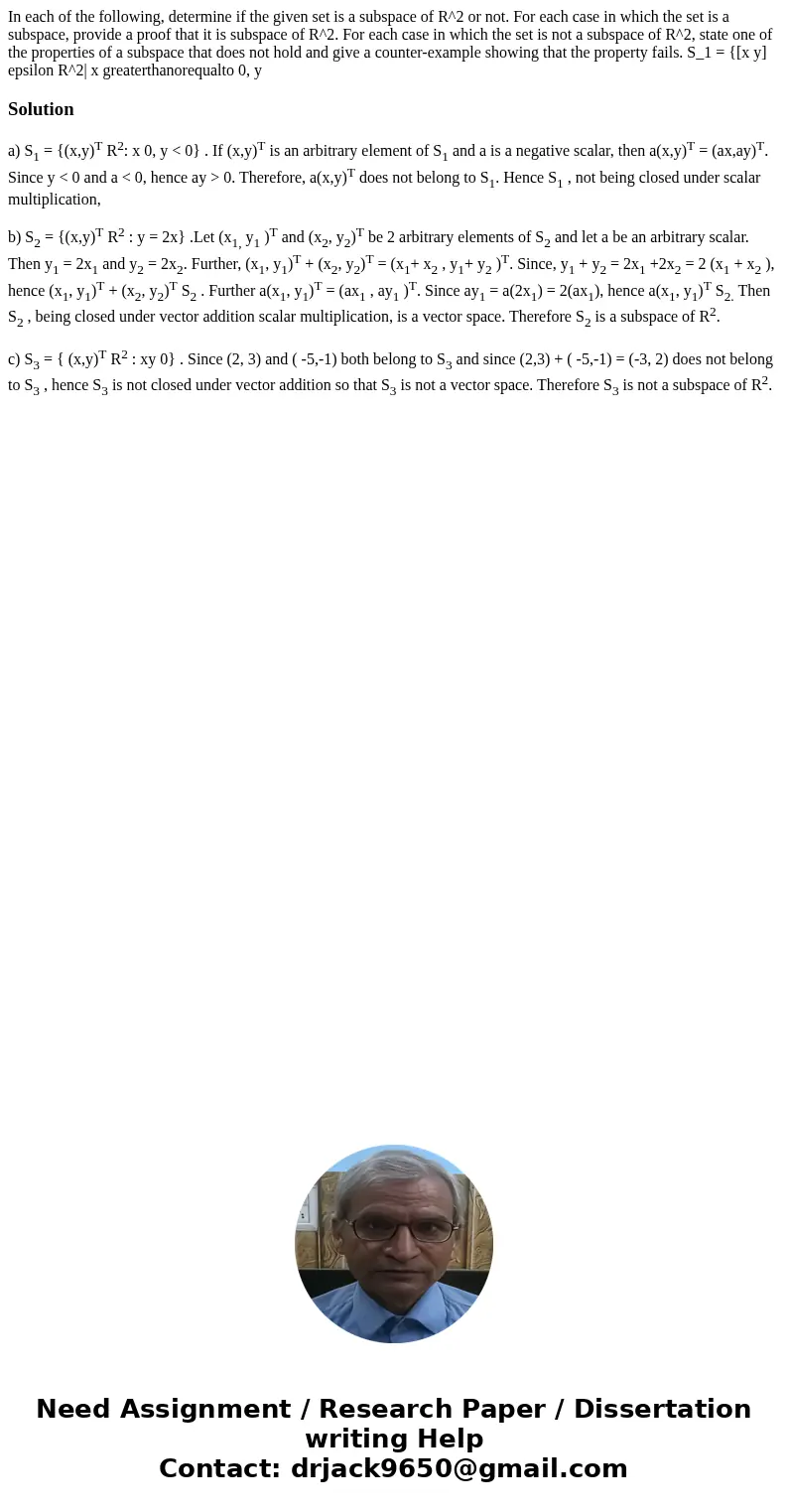In each of the following determine if the given set is a sub
Solution
a) S1 = {(x,y)T R2: x 0, y < 0} . If (x,y)T is an arbitrary element of S1 and a is a negative scalar, then a(x,y)T = (ax,ay)T. Since y < 0 and a < 0, hence ay > 0. Therefore, a(x,y)T does not belong to S1. Hence S1 , not being closed under scalar multiplication,
b) S2 = {(x,y)T R2 : y = 2x} .Let (x1, y1 )T and (x2, y2)T be 2 arbitrary elements of S2 and let a be an arbitrary scalar. Then y1 = 2x1 and y2 = 2x2. Further, (x1, y1)T + (x2, y2)T = (x1+ x2 , y1+ y2 )T. Since, y1 + y2 = 2x1 +2x2 = 2 (x1 + x2 ), hence (x1, y1)T + (x2, y2)T S2 . Further a(x1, y1)T = (ax1 , ay1 )T. Since ay1 = a(2x1) = 2(ax1), hence a(x1, y1)T S2. Then S2 , being closed under vector addition scalar multiplication, is a vector space. Therefore S2 is a subspace of R2.
c) S3 = { (x,y)T R2 : xy 0} . Since (2, 3) and ( -5,-1) both belong to S3 and since (2,3) + ( -5,-1) = (-3, 2) does not belong to S3 , hence S3 is not closed under vector addition so that S3 is not a vector space. Therefore S3 is not a subspace of R2.

 Homework Sourse
Homework Sourse